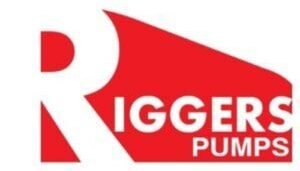Vehicle washing and cleaning systems can be classified into several categories based on the type of system, application, and the method used for cleaning. Below is an overview of common classifications:
1. Manual vs. Automatic Systems
- Manual Systems: Require human intervention for cleaning the vehicle. These systems usually involve handheld hoses, pressure washers, and cleaning brushes.
- Automatic Systems: Fully automated systems where vehicles move through a washing station without manual effort. They can include conveyor systems, rollovers, or drive-through washes.
2. Based on Washing Method
- Pressure Washing Systems: Use high-pressure water jets to remove dirt and grime from vehicles. These systems are commonly used for heavy-duty applications, such as trucks and industrial vehicles.
- Brush-Based Systems: Use rotating brushes or rollers to clean the surface of the vehicle. These are typically found in automatic car wash stations.
- Touchless Systems: Rely on high-pressure water and cleaning chemicals instead of physical brushes. This reduces the risk of surface damage to the vehicle.
- Steam Cleaning Systems: Use hot steam to clean the vehicle’s surface and interior. This method is effective for sanitization and removing stubborn stains.
3. Based on Application Type
- Passenger Vehicle Wash Systems: Designed for cars, SUVs, and smaller vehicles. These systems are usually found in commercial car washes or self-service stations.
- Truck and Heavy-Duty Vehicle Wash Systems: Specialized systems designed for large vehicles such as trucks, buses, and construction equipment. These often include stronger pressure systems and larger washing bays.
- Train and Rail Wash Systems: Developed specifically for cleaning rail cars and trains. These systems typically use large brushes, high-pressure water, and chemical treatments.
- Aircraft Wash Systems: Highly specialized systems designed for cleaning aircraft surfaces. These require gentle methods to avoid damaging sensitive parts of the aircraft.
- Mining and Industrial Equipment Wash Systems: Heavy-duty systems designed to clean large mining trucks, excavators, and other industrial vehicles. These systems usually incorporate powerful pressure washers and automated systems for dealing with excessive grime.
4. Based on Operation Type
- Rollover Systems: The vehicle remains stationary while the washing equipment (brushes or jets) moves around it. Common in smaller car washes.
- Conveyor Tunnel Systems: The vehicle is moved through a long tunnel with multiple cleaning stages, including pre-wash, wash, and drying. This system is typically used for high-volume car washes.
- Drive-Through Systems: Vehicles drive through a washing system where stationary equipment like water jets, brushes, or sprayers clean the car as it passes by.
5. Based on Water Recycling and Environmental Impact
- Water-Recycling Systems: These systems include filtration and water treatment setups that recycle the water used during vehicle washing. This minimizes water waste and meets environmental regulations.
- Eco-Friendly Cleaning Systems: Use biodegradable cleaning agents, steam, or reduced water pressure to minimize environmental impact. These systems are popular among eco-conscious consumers and businesses.
6. Specialized Cleaning Systems
- Interior Cleaning Systems: Include systems for cleaning the interior of vehicles, such as vacuuming, carpet cleaning, and interior detailing tools.
- Wheel and Underbody Cleaning Systems: Specifically designed to target hard-to-reach areas like the undercarriage and wheels. These systems can be standalone or integrated into full vehicle wash systems.
7. Self-Service vs. Professional Systems
- Self-Service Systems: Allow vehicle owners to wash their own vehicles using provided equipment like pressure washers, brushes, and vacuums. These are usually found at gas stations or designated self-service wash stations.
- Professional Systems: Managed by trained personnel or fully automated, designed for higher efficiency and better results, typically found at commercial car washes or industrial sites.
This classification system helps in selecting the right washing and cleaning system based on the vehicle type, cleaning method, and operational needs.

